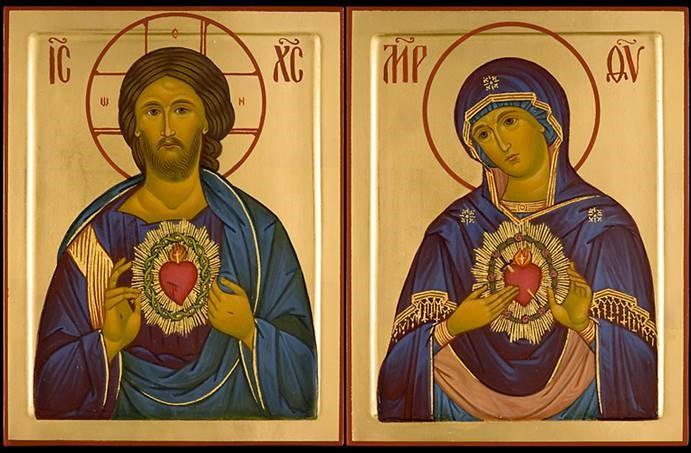
As a Catholic, I was often puzzled by the continued return to heart imagery among our saints and in our art. The "Sacred Heart" of Jesus and the "Immaculate Heart of Mary," where both are pointing to their blazing heart, are images known to Catholics worldwide. I often wonder what people actually do with these images. Are they mere sentiment? Are they objects of worship or objects of transformation? Such images keep recurring because they must have something important, good, and perhaps even necessary to teach the soul. What might that be?
Many have described prayer as bringing your thinking down into your heart. Next time a resentment, negativity, or irritation comes into your mind, and you are tempted to play it out or attach to it, instead move that thought or person into your heart space--literally. There, surround this negativity with silence (which is much easier to do in the heart) and your pumping blood (which will often feel warm like coals). In this place, it is almost impossible to comment, judge, create story lines, or remain antagonistic. You are in a place that does not create or feed on contraries but is the natural organ of life, embodiment, and love. Love lives and thrives in the heart space.
This practice has kept me from wanting to hurt people who have hurt me. It keeps me from obsessive, repetitive, or compulsive head games. It can make the difference between being happy and being miserable and negative.
Could this be what we are really doing when we pray for someone? Yes, we are holding them in our heart space. Do it in a physical, experiential way and you will see how calmly and quickly it works. Now the Sacred Heart and the Immaculate Heart have been transferred to you. They are pointing for you to join them there. The "sacred heart" is then your heart too.
Reflection by Richard Rohr, OFM
Adapted from Immortal Diamond: The Search for the True Self, Appendix D (Jossey-Bass: 2013), as published in Daily Meditations, January 16, 2016. Reprinted with permission of the Center for Action and Contemplation.



